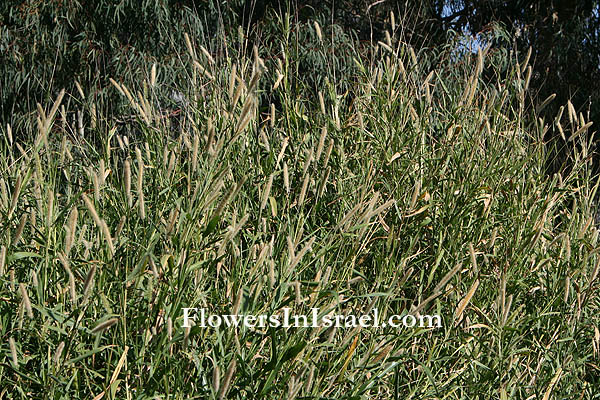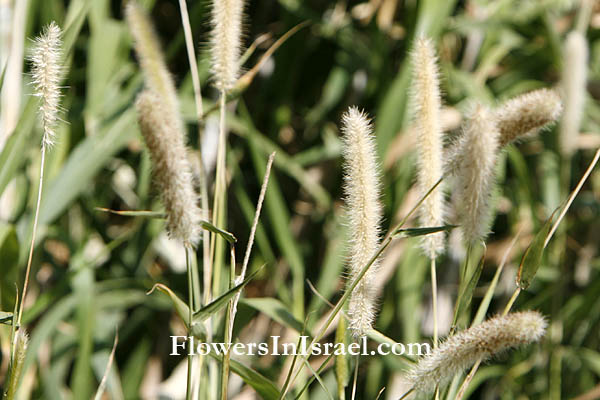Elephant grass, Marker grass, Napier grass,
Hebrew: זיף-נוצה ארגמני, Arabic: الثيوم الأرجواني
| Scientific name: | Pennisetum purpureum Schumach. | |
| Synonym name: | Pennisetum benthamii Steud. | |
| Common name: | Elephant grass, Marker grass, Napier grass | |
| Hebrew name: | זיף-נוצה ארגמני | |
| Arabic name: | الثيوم الأرجواني | Family: | Graminea (Poaceae), Grass Family, משפחת הדגניים |

Location: Heftziba Farm, Hadera |
| Life form: | Hemicryptophyte | |
| Leaves: | Alternate, entire, smooth | |
| Flowers: | Purple, green | |
| Flowering Period: | September, October, November | |
| Habitat: | Humid habitats | |
| Distribution: | Mediterranean Woodlands and Shrublands | |
| Chorotype: | Escaped from cultivation | |
| Summer shedding: | Perennating |

Location: Heftziba Farm, Hadera Derivation of the botanical name: Pennisetum, penna, a feather; seta, a bristle; feathery bristles. purpureum, purple. benthamii, named after George Bentham (1800 - 1884), English botanist, taxonomist, author, President of the Royal Society, and a Fellow of the Linnaean Society of London. The Hebrew word: זיף-נוצה, ziv-notza, ziv =bristle, notza =feather; feathery bristles.
|